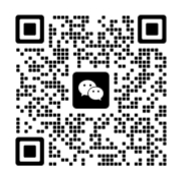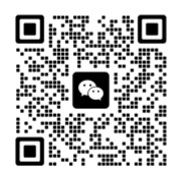http://mao.ecer.com/test/capacitivetouchpanels.com/supplier-4657516-pcap-touch-panel
With the widespread application of touch screen technology, the division of touch areas on touch screens is a crucial part of touch screen design. It not only affects the user experience, but also directly relates to the interaction efficiency and functional implementation of the device.This article will delve into the division of touch areas in PCPA Touch Panel.
1.The basic principle of PCPA Touch Panel
Touch screen systems typically consist of two parts: touch detection sensing components and touch screen controllers. The touch detection sensing component is responsible for collecting user's touch information and transmitting it to the controller, while the touch screen controller processes the received information, determines the user's touch position, and sends the position information to the higher-level host. At the same time, it receives control commands sent by the host and executes them.
From a technical perspective, touch screens can be divided into four categories: infrared technology touch screens, surface acoustic wave touch screens, resistive touch screens, and capacitive touch screens.
Infrared technology touch screens form an infrared detection network by installing infrared emitting and receiving devices on the outer frame of the touch screen. Any object that changes its touch point with infrared radiation can achieve touch detection. Infrared touch screens are not affected by current, voltage, and static electricity interference, making them suitable for harsh working environments. They are affordable, easy to install, and have fast response times.
Surface acoustic wave touch screens use mechanical waves propagating along the surface of a medium for touch detection. It consists of a touch screen, a sound wave generator, a reflector, and a sound wave receiver. When a finger touches the screen, the sound waves on the electric shock are blocked, and the sound wave receiver determines the coordinate position accordingly. Surface acoustic wave touch screens are not affected by environmental factors such as temperature and humidity. In addition, They have extremely high resolution, excellent scratch resistance, long service life, and good light transmittance, However,they are afraid of water and oil stains.
A resistive touch screen is composed of multiple layers of composite films, including a base layer, a conductive layer, and a protective layer. When the surface of the touch screen is subjected to sufficient pressure, contact occurs between the top and bottom layers, and a voltage representing the coordinates is generated through the principle of a voltage divider. Resistive touch screens are inexpensive, responsive, not afraid of dust and moisture, and can adapt to various harsh environments. But the outer film is easily scratched, and the multi-layer structure can cause significant light loss.
A capacitive touch screen is achieved by coating a transparent conductive layer (ITO) on the screen and then covering it with a protective glass layer. When a finger touches the screen, the electric field changes, causing a small amount of current to flow. The controller calculates the coordinates of the contact point by detecting this change value. The capacitive touch screen can sense with a light touch, making it easy to use. There is almost no wear and tear on the contact between fingers and the touch screen, and the performance is stable. But as the usage time increases, drift may occur.
2.Method for dividing touch areas Regional boundary point division
This method detects touch signals on a capacitive touch screen and records touch information based on the touch signals to generate a touch distribution map. Then construct a touch virtual distribution map so that each point has 8 adjacent points. By scanning the virtual distribution map of touch, the boundary points of the touch area are determined to determine the effectiveness of the touch area.
In front-end development, CSS layout techniques can be used to divide different touch areas. For example, using div elements to divide different areas and listening for touch events through JavaScript to determine the area where the touch point is located. This method is flexible and convenient, suitable for various complex touch area partitioning requirements.
Gesture recognition is also an effective method for dividing touch areas. Determine the effectiveness of touch by recognizing gestures of touch operations. You can use gesture recognition libraries in front-end development, such as Hammers. js, to achieve gesture recognition and processing. Gesture recognition can include operations such as single finger sliding, double finger zooming, and double finger rotation, and is suitable for various complex touch interaction scenarios.

 Your message must be between 20-3,000 characters!
Your message must be between 20-3,000 characters! Please check your E-mail!
Please check your E-mail!  Your message must be between 20-3,000 characters!
Your message must be between 20-3,000 characters! Please check your E-mail!
Please check your E-mail! 

